Plug-and-Play Van Electrical Systems in 2025
Plug-and-Play Power Systems for 2025!

New Electrical System Options
Some significant changes have occurred in the off-grid electrical system space in the past couple of years. For the past several months we have been testing an incredible new option that we wished was available when we built our van. We are talking about a full featured plug-and-play electrical system. Other systems do not have the level of integration and ease of implementation that this system features. Let’s dive into it.
We will be discussing the EcoFlow Power Kits. Available in 2kW | 4kW | 5kW | 10kW and 15kW versions. *If you use our link and the EcoFlow Power Kit coupon code OURKARAVAN10 at checkout, you will save 10% on your order. We are told this discount code will allow purchase at a cost lower than this unit can be advertised and sold elsewhere.
Some of the links on this page are affiliate links. This means if you click on the link and purchase the item, we will receive an affiliate commission at no cost to you. All opinions remain our own and we will never recommend a product we have not used or do not believe in.
Traditional Off-Grid Electrical Systems
The graphic to the right is a simplified version of a traditional van electrical system. Batteries are linked together with hand-made heavy-gauge cables. A host of separate boxes handle specific tasks. Some of those boxes include an inverter for turning 12V DC power into 120V AC, a DC-DC charger (for alternator charging), a shore power charger, solar charge controller, distribution boxes, fuses, circuit breakers, bus bars and a host of other things connected together to form a system.
*This diagram is over-simplified, as it does not show any fuses or circuit breakers to protect the wiring from a fault.
EcoFlow Power Kits
Meanwhile, here’s what the EcoFlow Power Kit looks like, installed in the OurKaravan wheel-well electrical cabinet. 5kW and 10kW systems are most popular (5kW shown). All of the discrete components shown above are contained within the Power Hub. The Smart Distribution panel houses six AC circuit breakers and twelve DC circuits with fuses in a single box. LEDs illuminate red to warn you of a blown fuse. WAGO-style circuit connectors make it super easy to hook up your loads. Beautifully designed (and included) cabling connects these few components together.
A 7-inch full color touch screen and phone application show electrical input and output. We must add it all looks very Apple/Tesla-like, which is a very good thing.
The sheer amount of labor that this system will save DIY’ers and van builders alike is significant. And when combined with our easy-to-assemble EcoFlow electrical cabinet, you’ll be up and running in no time.
Why Buy the EcoFlow Power Kit?
- EcoFlow Power Kits are carefully engineered and integrated systems;
- Safety–no DIY battery cables and lugs, and cables are secured to the devices;
- Installation is plug-and-play;
- Easily expandable with additional EcoFlow batteries;
- Compact design, saving space;
- The batteries are 48 volt (with 12 and 24 volt outputs), reducing wire sizes and capable of running highly efficient 48V DC Air Conditioners
- Smart Controls show real-time electrical data via the 7-inch touch screen and phone application;
- Cost will be significantly less than a Victron-based system, with significantly less install labor;
- OurKaravan electrical cabinet is available to make your install that much quicker;
- 5 year EcoFlow warranty with optional upgrade to 10 years
The Labor/Time Savings is Real!
Let’s discuss the reality of a custom solar-electric system. This wiring diagram depicts the electrical system in our van now, in 2025. Does that look complicated to you?
We were loaned an EcoFlow Power Kit for testing. Our hands-on experience with this unit made us realize the many advantages over a traditional electrical system. For one, we had only three connections to make to have the system up and running. First we used the included cable to plug the battery into the Smart Hub. Next, we connected the Smart Hub to the MC4 solar connectors of our solar panel with the included cable. A telephone-style jack connects the 7″ touch screen to the system, and that was it! Literally minutes later we were charging our Tesla on 120V power provided by the EcoFlow system. Meanwhile, we had hundreds of hours into our van’s electrical system before it did anything at all.
Traditional Van Electrical Distribution
In a typical van build (such as ours), discrete components are connected via circuit breakers, bus bars and distribution blocks. A small portion of our electrical distribution can be seen at-right. Done properly, you must calculate the maximum load of each cable. The correct wire gauge and breaker size must be chosen for each load. You can very easily have a fire when undersized wiring is asked to carry a load beyond its rating.
Each wire has to be measured and cut-to-length. Next, wires are stripped of insulation and wire lugs are crimped on with a special tool. Wire lugs require the correct hole diameter to match the stud it is attached to. (Not doing so will create resistance in the form of heat.) The process of matching each lug to the studs of each switch, fuse, busbar etc is time-consuming. Need we go on…this requires a lot of work and attention to detail.
Missing from this photo are the 120V AC breakers as well as the DC distribution. In other words, this is only a small part of the wiring in a traditional van electrical system.
EcoFlow “Smart Distribution”
In contrast to above, the EcoFlow Smart Distribution panel provides all of the AC and DC breakers, fuses and wire connections in one box. 120V AC enters the box on the left and WAGO-style connectors neatly “land” the cables. Six AC circuit breakers provide circuit protection.
12/24V DC power is brought in from the Smart Hub on the right. Each load connects to a positive and negative WAGO connector. Twelve fuses protect the loads and the LEDs below the fuses show any faults or blown fuses. It’s simple and very NEAT. (If more DC outputs are required, you can simply wire a traditional DC fuse block to one of the twelve circuits.)
A cover panel conceals and protects the wiring and labels can be added for each circuit.
Heavy-Gauge Wiring
One huge advantage of the EcoFlow system is the cabling is included. As shown to the right, cables that connect to the vehicle alternator and solar panel(s) are included. The solar cable has standard MC4 solar connectors on the end, so we had our solar panel connected in seconds. Power from the batteries plug into the Smart Hub, as well as AC in from your shore power connection on the side of your van.
There are a couple of ports on the right side of the Smart Hub where cabling connects both AC and DC to the Smart Distribution panel shown above.
Safety of an Integrated System
We cannot overstate how important it is to have a properly engineered electrical system. Even as good as our DIY system is, we have learned to check the tightness of our cables on a regular basis. We had an inverter cable loosen up from traversing dirt roads. This created so much resistance in the form of heat it could have caused a fire.
EcoFlow cables have a positive-latch to keep it secure adds a real measure of safety. Compare the 250kW-capable Tesla charge plug to the battery ports on the EcoFlow. You can see similarity in their design, and the ability to pass large currents through this sort of connection without unnecessary resistance and heat.
Off-Grid Testing
We have been using our EcoFlow as more of an off-grid home setup. The solar panel provides charging via the included cable. The 120V output of the EcoFlow is being used to charge our Tesla. We could definitely benefit from more solar, however we wanted to get some experience with these components before they go into an electrical cabinet for a van.
We have not had any hiccups with this system. In fact, there are absolutely NO reasons we wouldn’t install this system if starting over today.
Touchscreen and Phone App
We keep drawing comparisons to Apple/Tesla, and the phone app is no different. It’s beautiful, and does a great job of showing energy flow in an easy-to-read manner. You can see battery temperature and set charge and discharge limits. AC and DC outputs can cycled on and off, as well as the various alternator and solar inputs. A system dashboard allows you to track generation and use to satisfy all your nerdy data cravings. Finally, over-the-air updates are likely to bring new features over time.
The touchscreen and app add the icing on the cake to an already well-designed system.
Downsides?
We can only come up with one. If you have very specific needs, you could customize a Victron (or similar) system to exceed some of the specifications of the EcoFlow. For example, doubling up on DC-DC converters may enable a higher alternator charging rate than the EcoFlow. You could also configure a Victron system to push DC loads above the 70 amp limit of the EcoFlow. The EcoFlow’s 70 amp limitation only applies to 12V output from the Smart Hub. If you have a 48VDC air conditioner plugged into one of the battery ports, all of your 12V capacity (1000W) or 24V capacity (1600W) is unaffected by the draw of the 48VDC air conditioner.
However, this will not be a limitation for 99% of us. In fact, our existing electrical system has all of the DC cables and master breakers sized at 60 amps, which is more than 30% beyond the maximum rating of all of our loads combined.
The fans in the Smart Hub can get a bit loud with pushing large 120VAC loads. *October 16, 2023 update–EcoFlow tells me a firmware update is coming to address this!*
Some Quick Specs
Full specifications are available on EcoFlow’s website, however the basics are:
- Batteries available between 2kW and 15kW with built-in heating;
- The pure-sine wave inverter is rated at 3,600 watts (7,200 watt surge);
- MPPT charge controller for up to 4,800 watts of incoming solar;
- 1,000 watt max alternator charging;
- 1,600 watt maximum DC output (70 amps at 13.6V) through the smart distribution hub;
- Batteries are long-lasting lithium iron phosphate chemistry;
- Smart Distribution box has six 120V AC breakers and twelve fused DC positions , six of which can be controlled by touchscreen and the app.
Summary
In summary, this EcoFlow Power Kit is an absolute game-changer when it comes to van electrical systems. The time savings from not having to research, mount discrete electrical components and wire it all together is massive. EcoFlow provides an additional level of safety because this is a highly engineered and integrated electrical system. Finally, the ability to easily expand the battery capacity and the over-the-air updates will keep this system relevant for years to come.
We can’t come up with any reason we wouldn’t go this route if starting over today. The time and cost savings alone (especially with our coupon code) are significant, but the features and capabilities make it a solid choice for an off-grid home or van. If you use our link at the beginning of this article you will save a minimum of $450 on your purchase. (OURKARAVAN10 coupon code good for 10% off all purchases over $4,000, so the smallest 2kW system does not qualify for the rebate. We think 4kW and 5kW are likely to be the most popular.)
Thanks for reading and feel free to hit us up if you have any questions about this system. We will leave our old DIY electrical system article online HERE if you want to go down that road. When you compare the workload required for a DIY system vs this EcoFlow, we think you’ll see why we love the EcoFlow!

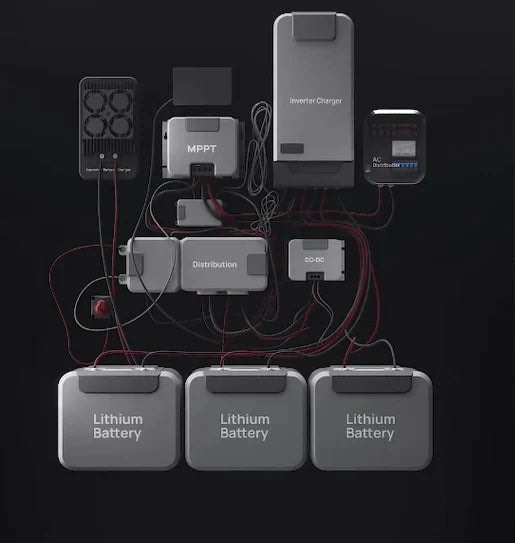
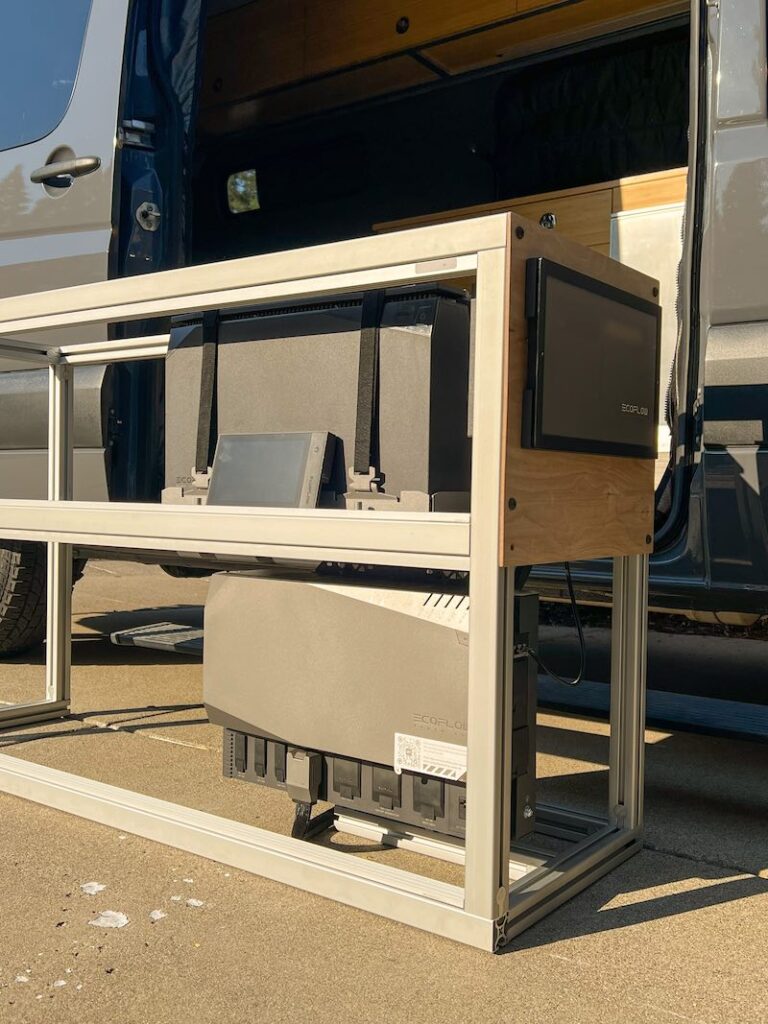

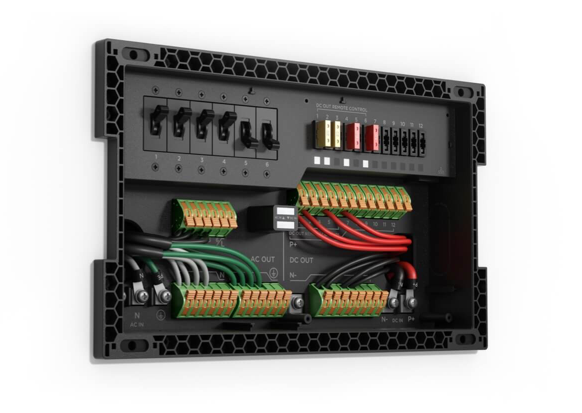
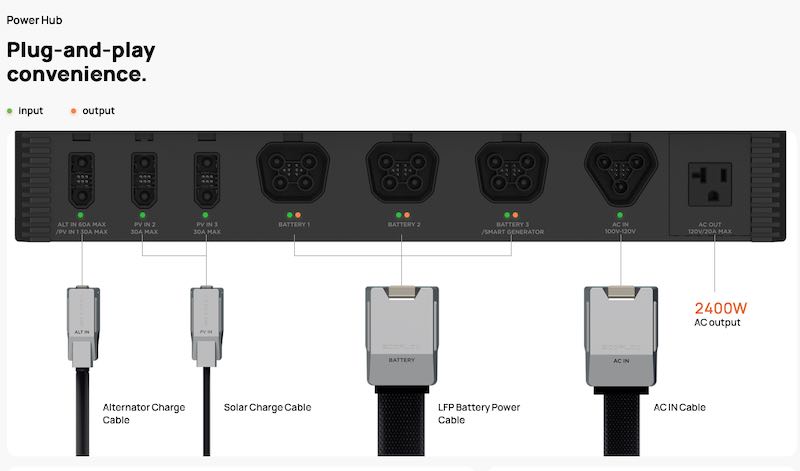
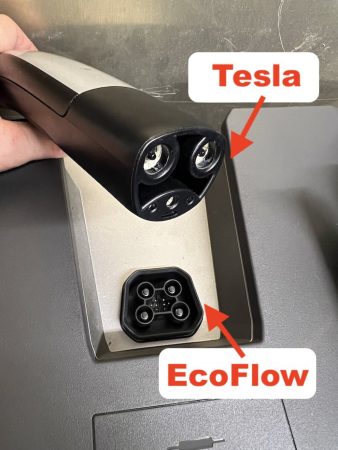
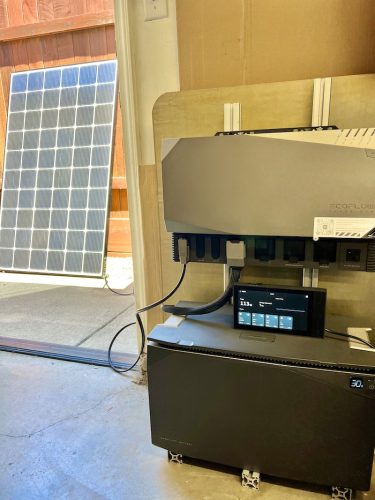
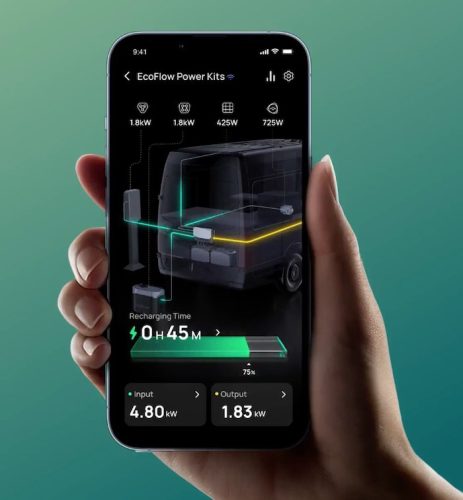
Thanks for the full review. I’m very interested. Have you used it in your van yet? I’m interested in how fast it charges from the alternator and if my 150 amp alternator would need to be upgraded.
Thanks again
Hi Phil,
I already had an electrical system in my van when I was loaned this unit for a few months for testing. I pushed it harder than the use it would see in the van, running the inverter for hours at a time charging a Tesla. That said Mercedes does not recommend pulling more than 40 amps from the alternator (see the Sprinter body builder guide, or this discussion: https://sprinter-source.com/forums/index.php?threads/87923/ )
I believe the EcoFlow has a max alternator input rate of 1,000 watts. I hope that helps.
A Ford Transit with the 3.5L EcoBoost® V6 Engine, which I am considering, allows for dual AGM batteries and 2 250-amp alternators. I have zero ideas of why this might be valuable/useful, but will it be good to use with this 15kWh Eco Flow Battery system? Would it charge faster, would the 2 alternators be useful in this case? How is the alternator connected to the Eco Flow, do you need additional hardware?
That’s a good question, I have zero experience with dual alternators. Sorry I can’t help there.
Looking at the EcoFlow website, I’m looking at $4500 for they system I need. How much was your old school system install price? I know this will be a lot faster for sure, but just wondering.
Really depends on the components you choose, you could be far over $4500 or way under depending on quality of components. I spent $2,200 on my battery alone (200ah with separate BMS and contactors) in 2017. However that battery just died, so see my new budget option here: https://ourkaravan.com/lithiumbattery/
I went this route because I have a very small battery compartment, otherwise the EcoFlow would have been on my list. -Ken